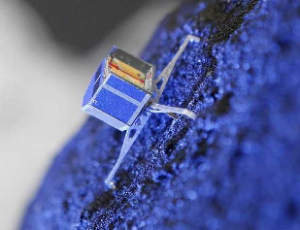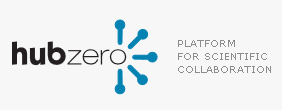
Arquivo para a ‘Tecnology’ Categoria
Hybrid cloud, the IT strategy for 2015
 A survey commissioned by Avanade, enterprise business IT solutions and services, with a sample of more than a thousand executives and leaders of business units in 21 countries, found that half of the services will be deployed in hybrid clouds in 3 years.
A survey commissioned by Avanade, enterprise business IT solutions and services, with a sample of more than a thousand executives and leaders of business units in 21 countries, found that half of the services will be deployed in hybrid clouds in 3 years.
Hybrid cloud is a service “hosting” where cloud computing uses IT resources that are provided through an internal private cloud within the company and resources provided by third party service providers in the cloud “publishes” the application type, storage and network systems.
The fact that the pace of investment in this area is accelerated in Brazil, according to Avanade, this will be a great solution focuses on the area in 2015, three caveats must be made:
– Despite the adoption of hybrid cloud be a priority, only 58% have any implementation strategy,
– The potential of hybrid cloud is poorly understood, some are able to identify the benefits provided and turn them into benefits in the workload and efficiency, and
– Most agree that organizations will have a generic benefit of improving business growth, but can not say why this happens.
So beware, not all news is beneficial to the company was not understood and implemented correctly, noted that 2015 will be a year of travel “sideways” in brazilian economy.
Three technology developments in Brazil in 2014
In Brazil in 2014, there were record of interactions, reaching the mark of 674.4 million interactions between July 6 and October 25, with photos, videos, memes, posts shaking elections on social networks.
between July 6 and October 25, with photos, videos, memes, posts shaking elections on social networks.
Total interactions represented almost three times recorded in the elections in India (227 million interactions), but the population there is six times greater than that of Brazil.
Another great event in Brazil was the Civil Marco, which can be summarized in two main points: freedom of speech, saying that the internet should help the Brazilian to manifest at will, under the terms of the Constitution and the second is the neutrality network, where internet providers are prohibited from selling packages by type of use.
From the point of view of responsibility for the contents, the Civil Marco says the company that provides the connection is never liable. However, if it receives a summons to remove a material and you do not, you may be guilty.
In May, Brazil received one of the largest streaming music service, the Spotify, which claims to have “more than 30 million songs” in their catalog arrived in the free version (with ads) and charges only US $ 14.90, and has launched actions and promotions for new subscribers.
The first microcomputers
 In the first Apple and PC, the British had home computers, Sinclair, imitated brand in Brazil by microcomputers TK, since the TK2000 was practically an Apple, this happened because they had market restrictions, then were made similar domestic.
In the first Apple and PC, the British had home computers, Sinclair, imitated brand in Brazil by microcomputers TK, since the TK2000 was practically an Apple, this happened because they had market restrictions, then were made similar domestic.
The guy who made these machines was Clive Sinclair, and there the original ZX computers were created by him, but that could not be sold on the domestic market, here was TK.
In the 80 Sir “Clive” title received the British court in 1983, was a great success with personal computers ZX80 and ZX81 the, national similar, TK82 and TK85 were, but only with the ZX Spectrum of Microdigital Electronics of Brazil, replica TK90X is that enjoyed success in the Brazilian market.
In the 1980s, ‘Sir’ Clive, as it is known since she received the title of Knight of the British Court, in 1983, had already made successful personal computers as the ZX80 and ZX81 and the were more popular than Apple, the price and simplicity.
The original models of Spectrum had a RAM memory 16 or 48 kilobytes and took five minutes to load programs from a cassette
You can find these and other stories in the Museum of Computing and Information Technology, Brazil.
The interface that changed the lives of Hawking
The physicist Stephen Hawking, developer of the Big Bang theory, is quadriplegic and collaborated with Intel founder Gordon Moore to develop a more efficient technology to control the computer interface for people without the tactile control and now the interface code will be made available in January 2015.
Gordon Moore to develop a more efficient technology to control the computer interface for people without the tactile control and now the interface code will be made available in January 2015.
The environment is called Context Aware Assistive Toolkit (ACAT) which has three basic components: a cheek movement of the input sensor to the item selection screen, an interface that chooses the letters to make words and software for interaction communication with the Web browser that anticipates what Hawking want to type when choosing letters.
The engineer Intel Lama Nachman Intel explains that Hawking wanted something “to the look and feel interface options made, but something more effective and fast to operate.”
In Tech Republic magazine article, Hawking says the software, which will now be open source, has changed their lives and allowed to continue his work in the development of physics.
Hawking said to the magazine that “as technology has more specialized it opens up possibilities that I could not even predict. The technology being developed to support people with disabilities is leading the way to break the communication barriers that once stood in the way, “he said.
“This new system is a lifestyle change for me and I hope it will serve me well for the next 20 years.”, And we hope that with open source there are more developers supporting persons with disabilities.
Shoes in 3D custom
 The shoes usually tighten over the side, heel or finger because people have different feet and ways not always fit the foot of the people, the company True Gault has the solution, scans the feet and makes shoes from the 3D model .
The shoes usually tighten over the side, heel or finger because people have different feet and ways not always fit the foot of the people, the company True Gault has the solution, scans the feet and makes shoes from the 3D model .
For now the service is available only to women, the 3D model customizes the shoe of how the customer prefers, choosing the color, shape, fabric and accessories dozen, and the company would reach the options the 2000 models.
After scanning your feet will mold to Spain where the shoes are made, the whole process takes six to eight weeks, and the price is not cheap, U $ 360 (about 900 brazilian reals), and from there is sent to the client’s home, then it worldwide.
The fashion of customization can change gradually manufacturing in many companies, there are now also manufactures clothing.
New technology allows HD 24 Ter
Current technology allows hard drives of up to 3 Terabytes (3000 Gigabytes), but the technology developed by the Japanese Hitachi now promises an HD 24 Terabytes.
by the Japanese Hitachi now promises an HD 24 Terabytes.
The development made together with NEDO (New Energy and Industrial Technology Development Organization), the technology has developed a breakthrough in miniaturization and organization more productively magnetic grains that make up the HD disks, reaching a size of 10 nanometers (1 billionth of centimeter).
Thereby increasing the density of an HD 8, which now rotates around 500 Gbits per square inch, thus reaching near Gbit 4000, which is a significant increase for a single disk.
Western Digital has launched the new 10TB hard drive in September, the same Helioseal using technology that debuted with the first 6TB WD hard drive in November 2013
Seagate announced a HD 8TB in July.
Cinema: what comes again
The film Goodbye to language Jean-Luc Godard’s film is already quite commented, the prestigious Cahiers du Cinema and the British magazine Sight & Sound place him second in the list of favorite and one that appears much quoted is Under the Skin, Jonathan Glazer´s film , third in two lists.
the British magazine Sight & Sound place him second in the list of favorite and one that appears much quoted is Under the Skin, Jonathan Glazer´s film , third in two lists.
Goodbye language account the relationship of a husband and his wife, marked by the lack of communication on the ground that the two do not speak the same language. So their dog decides to intervene in the relationship and talk. The cast includes Heloise Godet, Zoe
Bruneau, Kamel Abdelli, Richard Chevalier and Jessica Erickson and will have 3D version.
Under the Skin, tells the story of an alien (Scarlett Johansson) arrives on Earth and will travel deserted roads and empty landscapes in search of human prey using its voracious sexuality as a weapon, it may seem a cliché but what happens in the process is the discovery of a humanization of alien, an interesting dialogue about sexuality.
Preceded by Despicable Me 1 and 2, Minions, yellow and unicellular now earn a movie just for them, their mission is to serve the evil doers of the world go to a convention of villains and there are Scarlet Overkill (Sandra Bullock), who aspires to be the first woman to rule the world, but the debut is only for June.
Jurassic World – the world of dinosaurs and Star Wars – the awakening of strength, promise premieres since before Christmas, also The Hobbit – the battle of the five armies should also debut as early as December, good just to young people, I am on hold.
Research develops new Turing test
 Alan Turing a pioneer of Computing, which developed a theoretical model called after Turing machine, completed after mathematician Alonzo Church in 1938, which gave rise to all computing algorithms, the basic principle stated:
Alan Turing a pioneer of Computing, which developed a theoretical model called after Turing machine, completed after mathematician Alonzo Church in 1938, which gave rise to all computing algorithms, the basic principle stated:
“The algorithm consists of a finite set of simple and precise instructions that are described by a finite number of symbols.”
About this idea was proposed a test, called the Turing Test, that if something was proposed to a person and a machine and we could not decide which was the response of a machine, would have been an “intelligence” machine.
Now a professor at Georgia Tech, Mark Riedi claimed to have developed an algorithm that describe it as a more accurate way to evaluate the potential of a smart machine than the famous Turing test, as the news in Georgia Tech site.
The new Riedi test, called Artificial Intelligence Creativity Test and the Lovelace 2.0 are based on Lovelace test, created in 2001, testing the production of a work of art or other creative enough human labor.
Ried believes that the original test was very subjective and created specific parameters for your test to be followed by a human reviewer. This allows the evaluator to assess the creative work of a machine without making subjective judgments of value.
Riedi will be presenting its new test with the Beyond the Turing Test, in Workshop of the Association for the Advancement of Artificial Intelligence (AAAI) in January 2015, in Austin, Texas.
Probe lands on Comet
 Asked 10 years ago to enter the solar system in orbit, the probe Rosetta has released the module called Philae, which successfully landed on the comet 67/P Churyumov-Gerasimenko, where it will be in the coming months sending data on the celestial body, announced yesterday the European Space Agency (ESA).
Asked 10 years ago to enter the solar system in orbit, the probe Rosetta has released the module called Philae, which successfully landed on the comet 67/P Churyumov-Gerasimenko, where it will be in the coming months sending data on the celestial body, announced yesterday the European Space Agency (ESA).
The agency has its headquarters in Darmstadt, Germany, announced yesterday the 16h02 (9:02 a.m. EST, Brazil): “We’re in the comet” which caused great excitement in the control center.
The fact is unprecedented in human history, and comets can bring data on the origin of solar systems, about the origin of the universe and even about the origin of life.
After analyzing the telemetry (data travels through the solar system and take almost 30 minutes to reach the earth), it was noticed that the harpoons that hold the probe in the comet did not fire at first, and this attachment can detach the probe before to perform all the desired measures and tests, but maybe the problem is reversed.
Comets travel at very high speeds in the solar system, the P / indicates a comet is periodic with orbital period shorter than 200 years, which makes the calculations a little simpler for landing, but even so it’s like a fly lands on a cannon ball.
Cyber-Earth: citizenship for nature
Cyber-Earth is a term used in the CCC blog (Comunity Computing Consortium) in a post Sheckar Shashi, a georeferenced representation based on the planet Web intended to serve as a communication tool for citizens, politicians and researchers, particularly on the nature, designed to preview the future of the planet and its sustainability.
representation based on the planet Web intended to serve as a communication tool for citizens, politicians and researchers, particularly on the nature, designed to preview the future of the planet and its sustainability.
Joint work with tools and Cyber-Earth expects to envision the future of the planet, enabling the discovery of spatio-temporal patterns, on which to make inferences based on meaningful standards, showing future threats to society and analyze the options and consequences worldwide .
Cyber-Earth could help citizens and policy-making mechanisms capable of making scientific predictions in the areas of climate and demographics, along with its effects on environments such aspects as: food, water and energy.
Building the next generation of Cyber-Land offers several important challenges such as the development of building blocks and software methodologies to compare alternative scientific models amid a large variety of physical sciences, social sciences, and information sciences.
The organization won a grant of $ 4.5 million in funding in the area called Geospatial Building Blocks (Gabbs) with two environments, the system called HUBzero, a platform for open source and GEOSHARE project that creates a tool for modeling the effect of climate change on historical and future crop yields.

